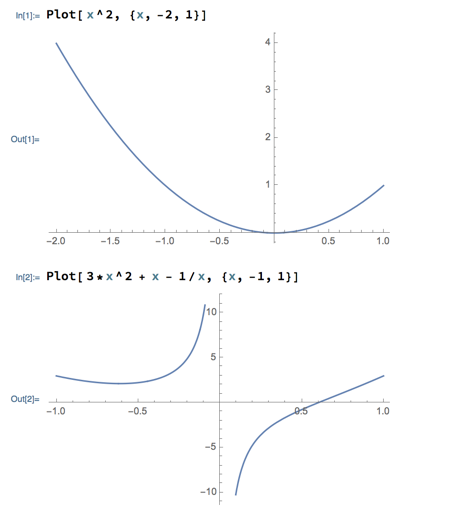Anything You Want to Talk About?
Derivative?
Defining a function’s derivative at a point as the slope of the tangent to the function’s graph at that point is a good definition for now.
Problem Set Question 4?
What is question 4 (a graph with certain behaviors with respect to where the function and its limit are defined) on the problem set asking in parts 2, 3, and 4?
For part 2 the function and limit are both defined and are equal, so the curve of the graph has to pass through the value of f(1).
For part 3, the limit is defined, so the graph has to converge to a single point, but f(2) is undefined, so that point on the graph has to be indicated by an open circle.
For part 4, the limit is defined, so again the graph converges to a point, but f(3) isn’t equal to that limit, so the point the graph converges to should be marked with an open circle while a closed circle somewhere else represents the value of f(3).
Misc
Weekly Meetings
A few people still need to make appointments to see me this week. Please do so soon, the longer you wait the more likely you will be closed out of times.
If you don’t include meeting details (e.g., Zoom ID, Google meeting link) in your appointment request and don’t work them out via email or similar, I will assume we’re meeting in my office hours Google meeting:
https://meet.google.com/boo-wyaj-hcr
(Which is a simple and perfectly logical place to meet.)
The easiest way to “turn in” work for these meetings is just to take a photo of your work on paper, and then screen-share the photo with me during the meeting.
SI
The next SI session is Sunday 6:00 - 7:30.
Plotting in Mathematica
Building on the “Intro to Mathematica” video near the end of Friday’s class notes.
The basic command to plot a function looks like
Plot[ function, {variable,low,high} ]
where function is the function to plot, variable is the variable in it, and low and high are the bounds between which to plot.
To write functions, the basic arithmetic operations are +, -, * (multiplication), / (division), and ^ (exponentiation). The order of evaluation is the usual “PEMDAS” (Parenthesized expressions, Exponentiation, Multiplication, Division, Addition, and finally Subtraction). You can use parentheses to control the order.
For example, this workbook in which I plot 2 different functions. Click here to download the workbook to experiment with in your own copy of Mathematica.

Reading Math
From the discussion for today.
A shout out to the comment in the discussion about doing example problems. This is tremendously important for many people. And it’s why you should all be doing the online discussions, especially from now on — they will more and more ask you to try examples of the methods and ideas from the reading.
Are there other tips anyone would offer? Consulting alternate sources can be helpful. (This and many others have been added to the discussion at or since class time.)
Can you apply some of the ideas to the statement that limx → a x = a?
There’s a paraphrase (as x approaches a, the limit of x must be a) and example (limx → 2 x = 2) in the discussion.
Can you illustrate the idea? A graph of y = x with, for instance, the “limit as x approaches 2” example from above marked on it might work:
How about the limit law that says that limx → a ( f(x) + g(x) ) = limx → a f(x) + limx → a g(x)?
How would you paraphrase this equation? Try not to just translate the mathematical symbols into English, e.g., “the limit as x approaches a of f(x) plus g(x) is...,” but rather see if you can do a little more putting the ideas into your own words. For example “limits distribute over addition” or “the limit of a sum is the sum of the limits.”
Next
We’ll keep talking about limit laws and then algebraic ways to find limits Thursday and Friday.
So there’s no new reading, but you might want to review all or part of the reading for today.
Continue the “Limit Laws” discussion, especially concentrating on the parts that ask you to use limit laws.
Also start looking at this discussion on algebraically finding limits. We’ll probably also talk about ideas from this discussion on Friday.
Tomorrow (Thursday) is a Cohort A day.